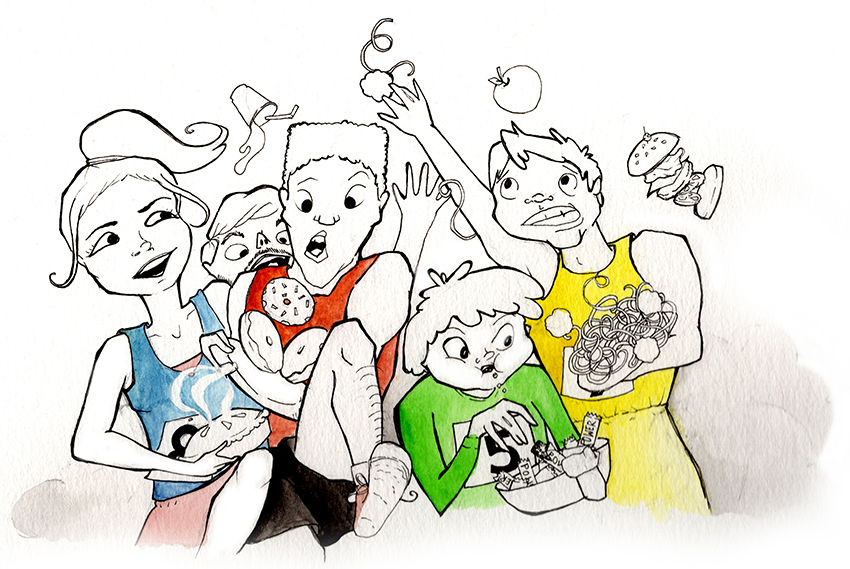I want to immerse myself in the Austin fitness scene and signed up for the Longhorn Run. Do I need to carb-load on the night before my first 10K?
—Leggy Longhorn
You’ve always thought the term “bonking” was an urban legend among novice marathoners. But you’re five kilometers into the race you’ve spent the past six months training for, and you have hit a wall. Bonking is real. The thought of dragging yourself five more kilometers is overwhelming, and with every step, you wish you had more pasta with dinner last night.
Carb-loading is more than just an excuse to eat a heavy Italian meal before an athletic event — carbohydrates are our body’s main source of fuel. Your body breaks carbohydrates down to glucose, a simple sugar. This glucose can either be used as immediate fuel or stored in the liver and muscles as glycogen, linked glucose molecules.
If your body is ever in a state where it needs some extra fuel, it breaks glycogen down and glucose enters the bloodstream. Your body’s glycogen storage can fuel you through 90 to 120 minutes of vigorous physical activity, according to the Academy of Nutrition and Dietetics. Once you use up all of your glycogen stores, the dreaded “bonking” happens.
The Academy of Nutrition and Dietetics recommends that individuals consume five to seven grams of carbohydrates per kilogram of bodyweight to prepare for low intensity training for a moderate duration, which Clinical Journal of Sport Medicine defines as about 100 minutes. To calculate your weight in kilograms, divide your bodyweight in pounds by 2.2.
However, gender, age, height, weight and training intensity are just a few of the factors that determine an athlete’s nutrient requirements. A registered sports dietitian can assess personal needs and customize a diet plan suited for marathon training.
Most running events occur in the morning, which means your dinner the night before is crucial for glycogen storage. But don’t think you need to spend hours at Olive Garden gorging on bottomless breadsticks on the eve of your marathon. Shocking your body with a new or different diet can cause indigestion or a bad night’s sleep. Incorporating pasta, potatoes or brown rice into your meals the night before is probably all that is necessary.
On race day, be extra careful with foods high in fiber, such as beans and bran products, fruits and greasy fats. These foods are hard to digest and may cause stomach discomfort. Toast with peanut butter or cereal with low-fat milk are good breakfast options. During the race, choose sports gels, gummies or smoothies for an easily digestible carbohydrate source, according to the American College of Sports Medicine.
Don’t forget your water bottle! If you are even 2 percent dehydrated, your athletic performance will decrease significantly, according to a study in the Canadian Journal of Applied Physiology. The U.S. National Library of Medicine recommends two cups of water two hours before a workout. Once you start exercising, you need about a cup of water every 15 minutes.
You should not overlook post-race nutrition, as it is important for recovery. Consume a combination of carbohydrates and protein, such as yogurt with granola or chocolate milk, within 30 minutes of finishing your race. The carbohydrates will help refuel glycogen stores, and protein will aid in muscle repair.
The number one rule of marathon nutrition: Don’t try any new foods or snacking routines around race day. Maintain a well-balanced diet all the time to help you prepare for special events. Stick with what your stomach knows to go the extra mile.
Editor’s note: If you have a question for the nutrition student, please email it to [email protected].















